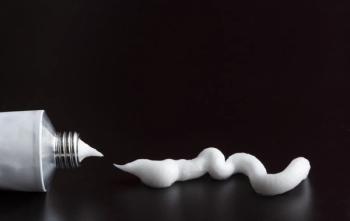
NASPAG provides clinical opinion on vulvar lichen sclerosus
The North American Society for Pediatric and Adolescent Gynecology (NASPAG) recently released a clinical opinion on how to diagnose and manage vulvar lichen sclerosus.
The North American Society for Pediatric and Adolescent Gynecology (NASPAG) recently released a clinical opinion on how to diagnose and manage vulvar lichen sclerosus (LS) based on a review of the literature. This clinical opinion replaces NASPAG’s 2014 recommendations.1
Vulvar LS, a chronic inflammatory skin condition often affecting prepubertal girls, is characterized by vulvar irritation and pain, vulvar pruritus, bleeding due to skin fissures, painful defecation, constipation, and sometimes urinary tract symptoms. LS usually appears as ivory white or rose-colored patches, which can spread to the perineal and perianal regions to create a “figure 8” shape. Genital scarring may develop, resulting in labial and clitoral hood adhesions, a buried clitoris, loss or attenuation of labia minora, and narrowing of the vaginal opening.
LS generally can be diagnosed based on the clinical exam, followed by a therapy trial. If the treatment fails or the diagnosis is in doubt, a referral to a pediatric dermatologist or pediatric gynecologist may be advisable.
Treatment mainstays include symptom management and ultrahigh potency topical corticosteroids (UPTC), generally clobetasol propionate and augmented betamethasone dipropionate, used daily or until symptoms are controlled. Ointments are preferable to creams because of their increased penetration and decreased risk of contact dermatitis. Topical calcineurin inhibitors, namely pimecrolimus, and tacrolimus, also have been used to treat LS.
Many patients continue to have mild itching and discomfort even after appropriate treatment. Good vulvar hygiene and cool compresses can ease these symptoms.
Because LS often relapses, NASPAG recommends maintenance treatment with a daily topical calcineurin inhibitor or with tapered topical steroids. If LS hasn’t progressed after 6 months of maintenance therapy, the patient should be checked yearly for another 2 years before considering discontinuing therapy if symptoms are well controlled.
The clinical opinion also noted that although UPTCs can resolve symptoms of pruritus and pain, long-term anatomical distortions can persist, leading to negative effects on sexual function and other aspects of quality of life. Clinicians, therefore, should counsel adolescents with LS to have regular gynecologic follow-up.
THOUGHTS FROM DR FARBER
This condition is not that unusual. I’ve seen it several times, and the diagnosis is straightforward if you’ve seen it (or pictures of it) before. It is not due to sexual abuse, and unlike with most rashes in the area, antifungal creams or low-potency topical steroids are not the treatment of choice.
Reference:
1. Simms-Cendan J, Hoover K, Marathe K, Tyler K. NASPAG clinical opinion: diagnosis and management of lichen sclerosus in the pediatric and adolescent patient. J Pediatr Adolesc Gynecol. Published online October 2, 2021. doi:10.1016/j.jpag.2021.09.008
Newsletter
Get the latest clinical updates, case studies, and expert commentary in obstetric and gynecologic care. Sign up now to stay informed.










